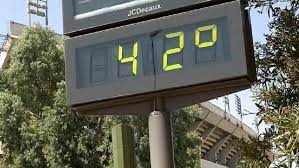
Urban Heat Island
During the summer months many Spanish Cities are becoming Urban Heat Islands
The urban heat island effect, a consequence of global warming and climate change, is becoming a reality with serious implications for human health in Spain. Cities like Madrid, Barcelona, Valencia, Málaga, and Murcia are experiencing an increase in nighttime temperatures due to various factors such as heat-absorbing materials like asphalt, building facades, and air conditioning units.
The Climate Change and Health Unit at the Carlos III Health Institute (ISCIII) recently conducted research on this phenomenon. They found that the combination of the urban heat island effect and global warming is leading to a rise in hospitalizations and deaths among the population.
One significant finding is that the impact of the urban heat island effect varies based on the geographical location and characteristics of each city. Inland cities like Madrid and Murcia experience discomfort for residents due to increased temperatures but have fewer immediate health consequences in terms of deaths or urgent hospital admissions.
On the other hand, coastal cities like Valencia face a more significant health risk, as rising nighttime temperatures are associated with higher mortality rates and hospitalizations. Barcelona, being both coastal and inland, seems to be influenced by both minimum and maximum temperatures concerning the urban heat island effect.
To better understand these effects, the researchers utilized data from meteorological observatories within and outside the cities. This allowed them to confirm substantial temperature differences between the urban interior and the outskirts, with Valencia showing the highest disparity of up to 11.2°C, followed by Murcia with 9.5°C, and Madrid with 7.1°C.
Given the importance of geographical location and local characteristics, the study emphasizes the need for region-specific investigations to determine the extent of the urban heat island’s impact in different types of cities.
The research was conducted under the leadership of Dr. Julio Díaz and Dr. Cristina Linares from ISCIII, with valuable contributions from researchers Miguel Ángel Navas and José Antonio López Bueno from the Climate Change and Health Unit. Collaborators from the State Meteorological Agency (AEMET), the Eduardo Torroja Institute of Construction Sciences from CSIC, and the Health Service of Castilla-La Mancha also participated in the study.
Leave a reply




Leave a reply